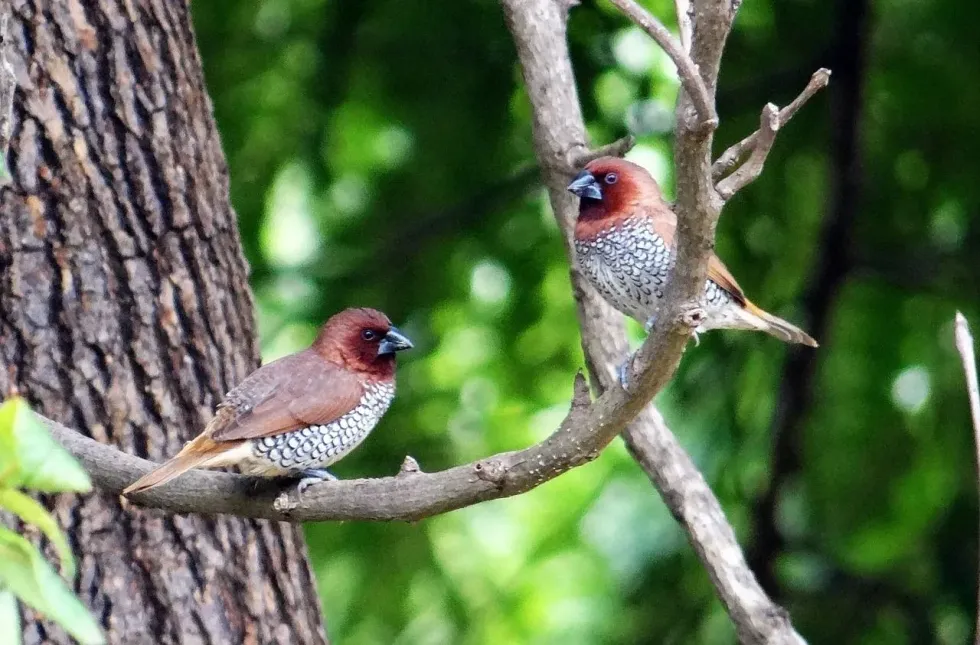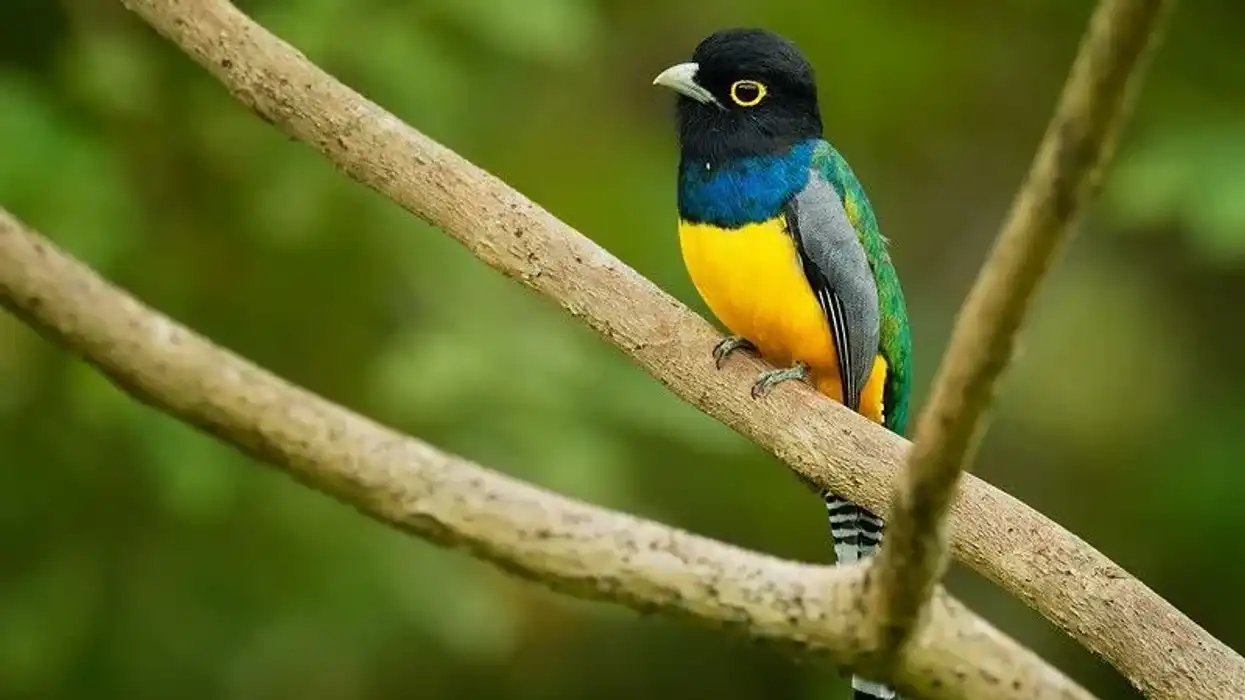The number of birds in the sky is rarely known to most of us. These winged creatures, aves perhaps, are the most important for life on earth.
They spread seeds, keep the numbers of insects and other vertebrates in check and add color to the wild. Another type of fascinating bird is finches. These Old World aves add beauty to nature.
They are very important seed distributors and pollinators and are well kept by bird enthusiasts. This fact file is about such a social sparrow sized finch called a scaly-breasted munia (Lonchura punctulata) from genus lonchura. This bird belongs to the order passeriformes, the order of the songbirds or preacher birds.
These small birds have peculiar scales covering their breast and abdomen region and are seen foraging in the Indian Subcontinent region. Belonging to the family estrildidae, a scaly-breasted munia is scientifically known as lonchura punctulata.
In the pet trade, scaly-breasted munias are known as nutmeg mannikin or spice finch. Here are some of the most interesting facts about scaly-breasted munias for your perusal. Afterwards, do check out our other articles on red-footed booby and Indian peafowl as well.
Scaly-Breasted Munia Interesting Facts
What type of animal is a scaly-breasted munia?
Scaly-breasted munia (lonchura punctulata) is a bird of the order passeriformes also known by its trade name nutmeg mannikin or a spiced fish. This bird is a sparrow sized songbird often seen in groups along with munia birds of its various species.
While this bird species is native to Southeast Asia, now their populations have spread across various parts of the world.
What class of animal does a scaly-breasted munia belong to?
Scaly-breasted munia (lonchura punctulata) is a bird, an ave, just like military macaw of the phylum chordata in kingdom animalia. More specifically scaly-breasted munias belong to the family estrildidae, the family of estididle finches or small passerine birds of the Old World tropics whose populations can be found across different parts of the world.
How many scaly-breasted munia are there in the world?
The spice finch breed in really good numbers and have decent global populations across several parts of the world. Exact figures are not really known, but their breeding populations are estimated to be around 100,000 in various habitats across India and Sri Lanka.
Considerable populations of this cage bird can be found in urban areas. Hence, their conservation status is that of least concern.
Where does a scaly-breasted munia live?
This sparrow sized finch species is found in abundance across its range of habitat in plains regions of the Indian Subcontinent. This cage bird species can be abundantly seen in the grasslands and the paddy fields in India.
Besides, populations of this bird species are also seen breeding in its native habitat regions of Sri Lanka, Iran, Nepal, Bangladesh and Pakistan.
What is a scaly-breasted munia's habitat?
This bird species is seen flocking near paddy fields and grassland regions more specifically near water bodies and is seen feeding on various trees and fruits near the foothills of the Himalayas.
Who do scaly-breasted munia live with?
This bird species is very social and is seen foraging in flocks of its own species across its native habitat range across southeast Asia. Their friendly nature even leads them to form flocks with the other subspecies of the munia birds present across their habitats.
How long does a scaly-breasted munia live?
It is estimated that this species lives for around eight years in captivity and the lifespan of this species is a little shorter in the wild at around six years because they are easy prey to larger predators.
How do they reproduce?
The breeding for this southern Asian bird species takes place during the summer or rainy season in India.
Courtship display involves a male bird singing a bird song which is sort of a jingle consisting of variable notes and whistles and he does that while sitting with a sloping posture with its head erect.
Both males and females of this southern Asian bird species build their nests on Toddalia asiatica, Gymnosporia montana and Acacia chundra trees in a dome shaped manner and after mating and lay around 4-6 eggs which hatch after a span of 16 days.
What is their conservation status?
According to the IUCN, the scaly-breasted munia is considered as a Least Concern species of birds in terms of conservation efforts required. These birds breed and survive in good numbers and are highly adaptable and hence their population is seen to be stable across various habitats.
Scaly-Breasted Munia Fun Facts
What do scaly-breasted munia look like?
This brown colored bird is a sparrow sized finch and has visible dark scales covering its breasts and the abdomen region. It has a dark pointy bill, well adapted to feed on grains and insects.
Males have a darker throat than females and the plumage covering their head and the back is a variable shade of brown. These birds have brown upperparts and paler underparts with black scale markings.
How cute are they?
These native south Asian birds are really cute just like lovebirds who are extremely adorable. The small size, peculiar markings on the abdomens, unique bird call and social abilities of scaly-breasted munia all add to their beauty. These are a few reasons they have a lot of bird sighters visiting them regularly.
How do they communicate?
This is a passerine bird and has unique calls for communicating with other birds of their same species. They communicate via short whistle like calls that sounds like kitty-kitty-kitty and is high pitched and flick their tail in a ritualistic manner to communicate. Besides these birds also roost communally sitting side by side making their musical calls.
How big is a scaly-breasted munia?
It is a small sized bird, with the size range measures at around 4.3-4.7 in (10.9-11.9 cm) and wingspan range of about 6 in (15.2 cm).
How fast can a scaly-breasted munia fly?
These finches fly with great speed. Their exact speed is not known but they are swift fliers and often seen foraging in flocks of 100 birds at once in Southern Asia.
How much does a scaly-breasted munia weigh?
These birds are lightweight and their range of weight is pegged at around 0.026-0.035 lb (11.79-15.87 gm). Their small size and hollow bones making up the exoskeleton and the light plumage making the exoskeleton are all reasons for its lightweight appearance.
What are the male and female names of the species?
Adult males are referred to as male scaly-breasted munia while the adult females are referred to as the female scaly-breasted munia. Both males and females prefer to feed on seeds, fruits, and insects.
What would you call a baby scaly-breasted munia?
A baby finch is sometimes referred to as a chick. A juvenile munia bird has an almost similar appearance to the adult bird except that its plumage is lighter in appearance.
What do they eat?
These birds have an omnivorous diet in terms of feeding behavior. They feed on a variety of seeds and fruits with their dark bill. They also feed on insects, worms and lantana for proper nutrition and overall growth.
Are they dangerous?
They are not at all dangerous. These birds are docile, friendly, and highly sociable. Their unique bird calls make them very appealing to bird sighters.
Would they make a good pet?
These birds are meant for the wild and not to be held captive, it is illegal in India to hold any wild bird captive.
Did you know...
A scaly-breasted munia even though docile is very competitive in nature. This behavior is visible during foraging activities. Besides, they also show allopreening that is they are able to groom their feathers while roosting communally.
What are other names for a scaly-breasted munia?
Pet traders also refer to a scaly-breasted munia as a nutmeg mannikin or spice finch owing to the unique color of its plumage.
Do wild birds recognize humans?
New research suggests that a bird may be able to identify its human friends by their voices and even by their faces. These birds, just like humans, have memories which help them recognize the people they are familiar with by their voices and appearance.
Here at Kidadl, we have carefully created lots of interesting family-friendly animal facts for everyone to discover! For more relatable content, check out these lark bunting facts and skimmer facts for kids.
You can even occupy yourself at home by coloring in one of our scaly-breasted munia coloring pages.










